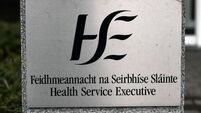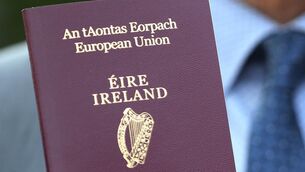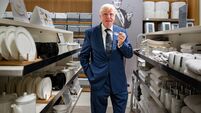Genealogy tourism big business as US visitors seek to trace their roots

Just like US President Joe Biden, many Americans are crossing the Atlantic to walk in the footsteps of their ancestors. President Joe Biden is greeted by Michael Ring, TD, Geraldine Byrne Nason, Ambassador of Ireland to the United States and Minister of State for Trade Promotion, Digital and Company Regulation Dara Calleary TD, last month. Photo: Julien Behal
The number of visitors flying to Ireland from the USA this summer is expected to reach 96% of pre-covid figures, according to Tourism Ireland.
The Irish tourism marketing body says that demand among Americans for holidays in Ireland this year is high, with the strong performance of the US dollar working in our favour.










